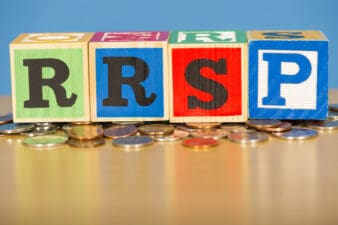Canada Pension Plan (CPP) benefits are crucial to retiring comfortably in Canada. Although CPP doesn’t cover all of an average Canadian’s expenses, it can go a long way in helping you make ends meet. The maximum CPP benefit for those taking benefits at 65 is $1,309 per month. That’s $15,708 per year. Add to that $1,309 in monthly dividend income and you have enough money to cover rent and other living expenses in smaller Canadian cities. If you get the maximum $1,855 per month benefit for Canadians who delay taking CPP until 70, and earn $2,000 per month in dividend income, you may even be able to make ends meet in Toronto!
Maximizing your CPP benefit takes a lot of planning. You need to earn the maximum pensionable income, work for most of your adult life, and then finally choose the right date to take benefits at. The decision about when to take benefits is complex enough on its own. Everybody knows that you’ll likely get more benefits if you take CPP at age 65 than at age 60. Taking CPP at 70, however, might not pay off. You have to live past age 80 for delaying CPP until age 70 to be worth it.
Personally, I do not plan on maximizing my CPP benefits. The calculations about when to take CPP to maximize benefits are quite complex. The mental energy is better spent elsewhere. In this article, I will explain what I am doing instead of trying to maximize my Canadian Pension Plan benefits.
Investing your own money is more profitable than trying to maximize CPP
For my retirement, I’m planning on relying on investments rather than CPP benefits. The reason is that investing in RRSPs and TFSAs is more lucrative than waiting for CPP benefits. Let’s say you earn $60,000 your entire life. Ignoring the basic personal amount, you’d pay $3,540 per year into the Canada Pension Plan. Over 30 years, that’s $106,200 paid in. If you take CPP at age 65 and earn the maximum, you get $314,160 over 20 years, ignoring future inflation adjustments and CPP enhancement.
That seems like a good “return,” but consider how far a $100,000 investment could go. Let’s say you invest $100,000 and compound it at 8.6% per year (the compounded rate of return on the TSX Index over the last five years). If you do that, you’ll end up with a $1.2 million balance after 30 years. If you can invest that at just a 3% yield, you get $35,600 per year in passive income. That’s $713,000 over 20 years – far more than what CPP pays out.
An example that illustrates the principle
To illustrate how lucrative investing can be, let’s imagine that you invest in Toronto-Dominion Bank (TSX:TD). TD is a bank stock that presently yields 4.5%. If you invest $100,000 in TD and earn a 5% annualized capital gain, and reinvest your dividends, you’ll compound at 9.5% per year if the dividend doesn’t change.
Historically, TD’s dividend has risen – but let’s ignore dividend increases for now. If you compound $100,000 at 9.5% over 30 years, you end up with a $1.5 billion balance. If you stop reinvesting your hypothetical TD dividends at age 65, letting them be paid out instead, you get $45,000 in dividends at a 3% yield. That’s a lot more money than the CPP program will ever pay out. And it doesn’t take all that much invested upfront.







